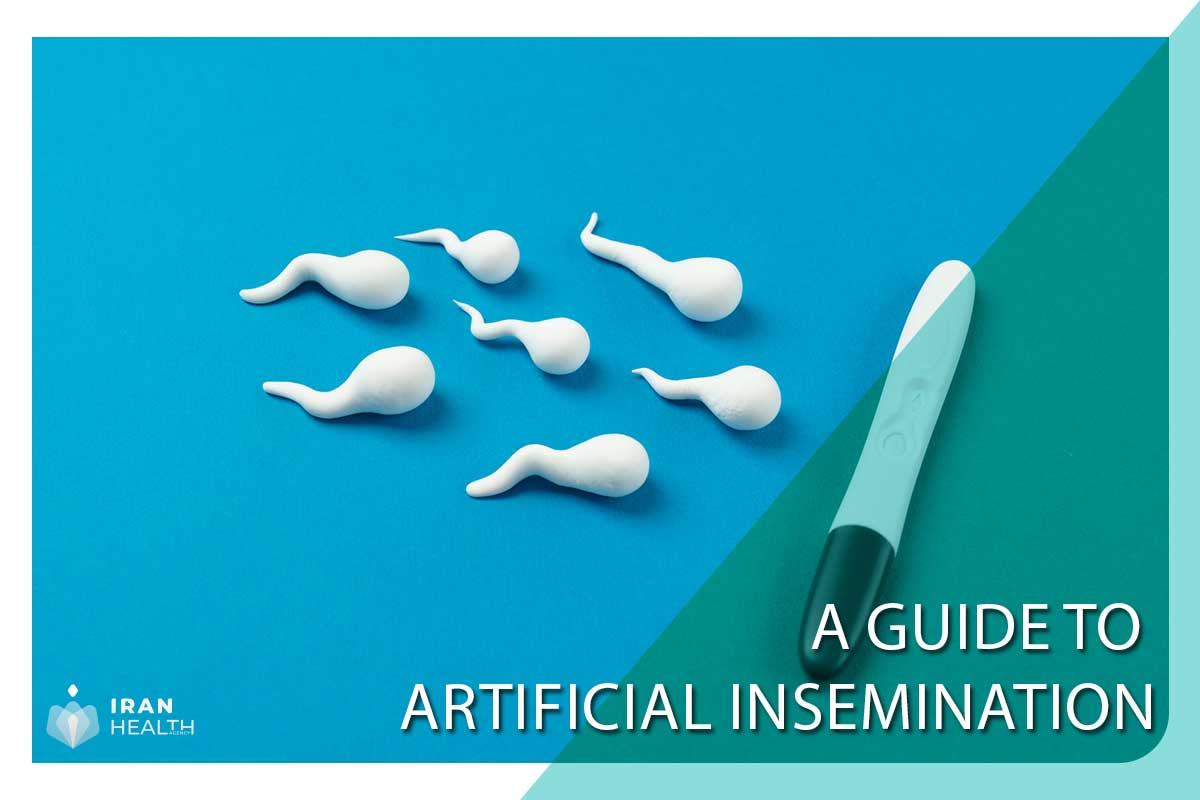This guide will explain everything you need to know about artificial insemination, including how successful it can be. You’ll also learn about some things you can try at home to help increase your chances of success with this fertility treatment.
Artificial Insemination Process:
Artificial insemination is a fertility treatment that involves placing sperm past the cervix and into the uterus or fallopian tubes to facilitate fertilization. The sperm used can come from the woman’s sexual partner or a donor. There are three main types of artificial insemination:
- Intrauterine insemination (IUI): The doctor threads a thin, flexible catheter through the woman’s cervix and places washed sperm directly into the uterus. This method places the sperm closest to the egg.
- Intracervical insemination (ICI): Washed sperm is placed just inside the woman’s cervix through a catheter. The sperm then traverse through the cervix and uterus to meet the egg.
- Intravaginal insemination: Also known as at-home artificial insemination, this involves inserting sperm high into the vagina close to the cervix, allowing sperm to then travel through the cervix. Ovulation prediction determines the timing.
- Before artificial insemination, ovulation-stimulating fertility medications may be used to produce multiple eggs. In addition to increasing the chances of conception, this also increases the risk of multiple births.
- Precise timing around ovulation is crucial when performing artificial insemination. Doctors track a woman’s cycle through ultrasound, ovulation prediction kits, and blood tests to determine peak fertility. It is possible to coordinate sperm placement under optimal conditions this way.
- After sperm placement, fertilization usually occurs as the sperm travels to meet the awaiting egg. Embryos resulting from fertilization implant grow in the uterus as in natural conception.
Side Effects
- Mild cramping and spotting are common side effects.
- More severe risks like infection, multiple pregnancies if too many eggs get fertilized, and ovarian hyperstimulation syndrome from fertility medications are rare.
Success Rates
- The success rate depends on the woman or couple’s fertility issues, age, the method used, etc.
- For couples with unexplained infertility using IUI with the woman’s ovulation, success rates can be 8-12% per cycle. It often takes several tries.
Benefits
- It’s less invasive and cheaper than IVF or other assisted reproductive technologies.
- It can enable pregnancy for single women, lesbian couples, men with serious fertility issues, and couples struggling with unexplained infertility.
Cost
- In the U.S., it tends to range between $300 to $1000 per IUI cycle when using partner or donor sperm, but costs vary based on insurance coverage and clinic.
- Medications, donor sperm, and multiple cycles raise costs significantly.
Cost in Iran:
Aside from the type of insemination, the source of the sperm, the number of treatment sessions, and the facility, there’s a lot to consider when considering artificial insemination in Iran. It can cost between $200 and $500 for an artificial insemination in Iran. That’s cheaper than artificial insemination in the U.S., which costs about $1,000 a cycle.
At Home Insemination
- At-home insemination, also called intravaginal or artificial insemination by donor (AID), is a DIY alternative to clinical artificial insemination.
- It involves a woman partnering with a sperm donor, usually someone she knows personally. Near ovulation, the woman uses a needleless syringe to insert the fresh or thawed donor sperm sample deep into her vagina, close to the cervix.
- If timed appropriately during peak fertility, sperm can traverse the cervix to fertilize an egg naturally. Using an ovulation prediction kit and tracking menstrual cycles can help with optimal timing.
- Success rates tend to be lower than clinical intrauterine or intracervical insemination. But for some, at-home insemination is appealing due to privacy, cost savings, accessibility, and ability to use a known donor. It gives more control over the process.
- Consulting an obstetrician at the start can help guide tracking ovulation, using fertility aids like ovulation test strips, obtaining sperm samples, proper insertion techniques, and pregnancy testing.
Is it as successful at home as at a clinic?
At-home insemination generally has lower success rates than clinical intrauterine or intracervical insemination performed at a fertility clinic. There are a few reasons for this:
- Precise Timing: Clinics can pinpoint the exact time of ovulation through blood tests and ultrasound monitoring.
Although ovulation predictor kits are available, it is difficult to determine the exact ovulatory window at home.
- Sperm Quality: Clinics wash and prepare sperm samples, selecting the best motile sperm and placing them directly into the uterus through a catheter.
As a result, sperm have the best chance of survival. That is because samples at home can’t be washed or optimized, and placement is more unpredictable.
- At home, placing sperm high near the cervix can be challenging, but doctors are highly skilled at threading catheters firmly through the cervix into the uterus. Doctors are highly skilled at this technique, so they have a greater chance of depositing sperm successfully.
- Conditions: A clinical setting allows doctors to enhance the reproductive tract environment for conception through techniques like follicular monitoring, fertility medications to produce more eggs, and embryo/luteal support after conception.
However, while at-home has lower success rates, it can still result in pregnancy, works for many people, provides greater accessibility/affordability, and gives more autonomy over the process. Following medical guidance is still recommended when using donor sperm artificially at home.
Some studies estimate that at-home insemination success rates per cycle may be in the 15-20% range compared to around 10-30% for IUI clinically, but rates vary significantly based on specific factors. Consult a doctor to understand particular chances.
Alternative Fertility Treatments
- An endocrinologist can advise on a range of fertility treatment options depending on the cause of infertility. Some of these options include:
- Surgery to correct structural issues like blocked fallopian tubes, uterine abnormalities, endometriosis lesions, or fibroids.
- Hysterosalpingography involves flushing dye through the uterus and tubes to determine blockages.
- Fallopian tube sperm perfusion directly injects sperm into the tubes through a laparoscope.
- Fertility drugs stimulate ovulation through hormones like clomiphene citrate, gonadotropins, GnRH analogs, etc.
- Lifestyle changes such as diet, exercise, sleep, and stress reduction are essential to support conception.
- In addition to treating thyroid conditions, diabetes, cancer, autoimmune issues, and STIs, we also provide treatment for underlying conditions.



